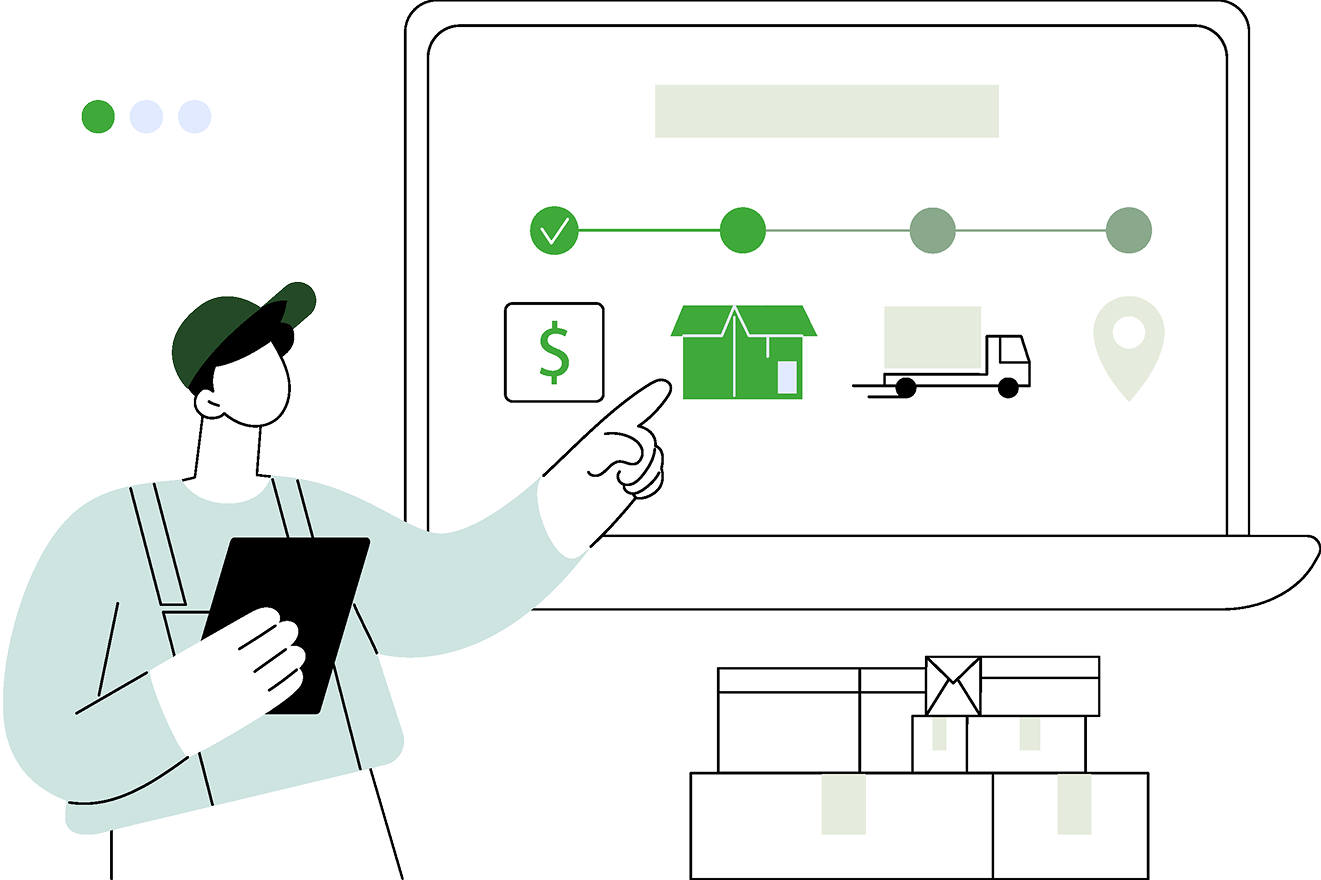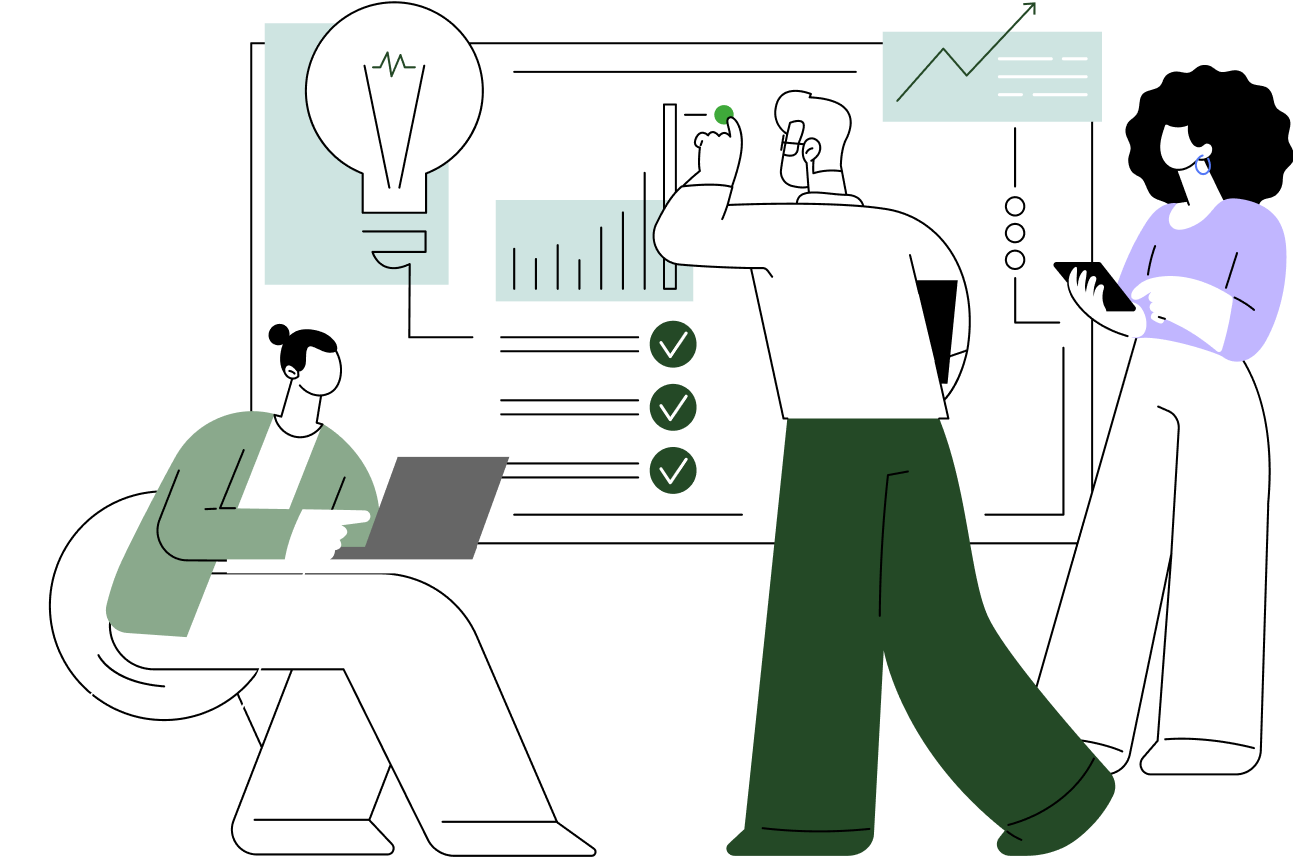No fluff. Just clarity.
In a world where data volumes are doubling every two years, the tools we use to wrangle information can make or break business success. From processing petabytes of data in real-time to automating complex workflows, modern data engineering tools have evolved far beyond simple ETL pipelines and SQL queries.
We've analyzed the most impactful platforms shaping the data landscape, focusing on solutions that deliver real value in production environments. Whether you're building a data warehouse from scratch or optimizing an existing stack, these tools represent the cutting edge of what's possible in data engineering today.
Key Takeaway
- Apache Spark Tutorial, Airflow, and Kafka stand out as leading open-source solutions for data processing, workflow organization, and real-time streaming respectively
- Cloud platforms including About Snowflake, Databricks, and Google BigQuery provide scalable options for data warehousing needs and advanced analytics capabilities
- Data transformation and integration become more accessible with tools like dbt and Fivetran, which simplify complex ETL/ELT workflows
- Analytics and reporting tools such as Tableau continue to be essential for converting processed data into actionable business insights
- The industry shows strong movement toward consolidated platforms that bring together multiple data engineering functions in one place, making management and operations more efficient
Apache Spark
Apache Spark Tutorial stands as a unified analytics engine that excels at processing large data sets. Its in-memory processing capabilities make it significantly faster than traditional data processing frameworks, while its support for SQL, streaming, and machine learning adds versatility for modern data teams.
Organizations use Spark for data warehousing operations, building machine learning pipelines, and handling real-time analytics workloads. The platform shines with its comprehensive libraries like SparkSQL, MLlib, and GraphX, making it adaptable across various use cases.
While Spark offers excellent scalability and strong integration with existing data tools, teams should consider the initial setup complexity and ongoing maintenance requirements. The open-source nature means no upfront licensing costs, though organizations often opt for commercial distributions like Databricks for additional support and features.
Spark works particularly well for companies processing massive datasets that need quick results. Its ability to handle both batch and stream processing, combined with extensive language support (Python, Java, Scala, R), makes it a practical choice for diverse data engineering needs.
Apache Airflow
Apache Airflow serves as a cornerstone platform for managing complex computational workflows in data engineering. Its core strength lies in defining workflows as Directed Acyclic Graphs (DAGs), allowing teams to build and monitor data pipelines with precision.
The platform comes with essential features that make pipeline management straightforward: a clean web interface for monitoring jobs, extensible architecture supporting custom operators, and built-in scheduling capabilities. Data teams typically run Apache Airflow for coordinating ETL processes, running batch operations, and automating repetitive data tasks.
The benefits of Airflow include its adaptable workflow design system and active community support, which provides ready access to solutions and shared knowledge. However, new users often face challenges during initial setup and configuration.
Since Airflow is open-source, organizations can implement it without licensing fees. The main expenses come from infrastructure requirements and maintenance costs. The tool fits well with teams that need reliable pipeline automation and scheduling, particularly those working with multiple data sources and complex processing requirements.
Snowflake
About Snowflake functions as a cloud-based platform that provides data warehousing and analytics capabilities. The system's architecture sets it apart by keeping storage and computing resources separate, allowing independent scaling of each component based on workload demands.
The platform supports multiple cloud providers, including AWS, Azure, and Google Cloud, giving organizations flexibility in their infrastructure choices. Its built-in features enable quick data loading, SQL-based analytics, and secure data sharing across business units or external partners.
Companies implement Snowflake for business intelligence projects, building modern data stack, and establishing collaborative data environments. The platform's automatic scaling and optimization features minimize administrative overhead, while its user-friendly interface speeds up adoption across teams.
Users benefit from Snowflake's performance and ease of use, though costs can increase with heavy compute usage. The platform uses a consumption-based pricing model, charging separately for storage and computation time. This structure allows businesses to control expenses by scaling resources up or down as needed.
Snowflake works well for organizations seeking a modern, serverless approach to data analytics, particularly those prioritizing quick deployment and minimal infrastructure management.
Apache Kafka
Apache Kafka functions as a distributed event streaming platform built for high-volume data pipelines and real-time applications. The system processes millions of messages per second through its publish-subscribe architecture, making it ideal for modern data-intensive operations.
Key strengths include fault tolerance through data replication, horizontal scaling capabilities, and persistent message storage. Organizations implement Kafka for log collection, monitoring systems, event sourcing, and connecting microservices architectures.
The platform excels at handling real-time data streams with minimal latency, supporting use cases from financial transactions to IoT sensor data processing. Its durability guarantees and exactly-once processing make it reliable for mission-critical applications.
While Kafka provides robust capabilities, it requires careful planning for optimal performance. Teams need expertise in configuration, cluster management, and monitoring. The open-source version comes free, though many organizations opt for managed services like Confluent Cloud to reduce operational overhead.
The tool fits particularly well in industries requiring instant data processing, such as finance, e-commerce, and telecommunications, where quick reaction to events drives business value.
Databricks
Databricks combines advanced analytics capabilities with an integrated Apache Spark environment, creating a powerful platform for data processing and machine learning. Built on a cloud infrastructure, it brings together data engineering tools in a single workspace.
The platform includes features that make data operations more efficient: collaborative notebooks for team projects, MLflow integration for managing the machine learning lifecycle, and Delta Lake technology for reliable data handling. Organizations use Databricks for large-scale ETL operations, building machine learning models, and running emerging technologies workloads.
Teams benefit from the platform's auto-scaling capabilities and managed Spark clusters, which reduce operational complexity. The integrated workspace allows data scientists and engineers to work together effectively, sharing code and insights through interactive notebooks.
While Databricks offers extensive functionality, smaller organizations might find the pricing structure challenging. The platform operates on a subscription model, with costs varying based on compute usage and selected features.
This solution works particularly well for larger enterprises that need a complete platform for data analytics, especially those running resource-intensive workloads or supporting multiple data science teams.
Apache Hadoop
Apache Hadoop operates as a distributed computing framework that helps organizations process and store large data sets. The system relies on three main components: HDFS (Hadoop Distributed File System) for storage, YARN for resource allocation, and MapReduce for data integration techniques.
The platform works well for companies dealing with extensive unstructured data that requires batch processing. Common applications include log analysis, customer behavior tracking, and large-scale ETL operations.
Organizations benefit from Hadoop's ability to scale horizontally across commodity hardware, making it cost-effective for big data storage. The system handles data quality replication automatically, providing built-in fault tolerance and high availability.
However, users should consider the technical requirements. Setting up and maintaining Hadoop clusters demands specialized skills, and its batch-oriented nature may not suit real-time processing needs. While the software is free, businesses need to account for infrastructure and administrative costs.
Hadoop fits organizations that process massive amounts of data and need an economical solution for long-term storage. Industries like telecommunications, healthcare, and financial services often implement Hadoop for data archiving and analysis projects.
Google BigQuery
Google BigQuery serves as a serverless data warehouse solution that processes petabytes of data without infrastructure management requirements. The platform integrates machine learning capabilities directly within SQL queries, letting analysts build predictive models using standard SQL syntax.
Companies implement BigQuery for large-scale data analysis tasks, including web analytics, marketing performance tracking, and IoT data processing. Its ability to handle real-time data insertions makes it suitable for applications requiring quick insights from data integration techniques.
The platform stands out with its automatic resource allocation and scaling, removing the need for capacity planning. Integration with other Google Cloud services creates a smooth workflow for data teams using the GCP ecosystem. Users can run complex queries across massive datasets and receive results in seconds.
While BigQuery offers excellent query performance and zero maintenance overhead, teams should monitor usage carefully as costs can add up with heavy querying. The platform provides two pricing models: on-demand pricing for irregular workloads and flat-rate pricing for predictable usage patterns.
The solution fits organizations looking for a managed analytics platform that combines powerful processing capabilities with simplified operations, particularly those already invested in the modern data stack.
Amazon Redshift
Amazon Redshift functions as a fully managed, petabyte-scale data warehouse service designed for data cleansing in engineering workloads. Its columnar storage technology and parallel processing architecture let organizations run complex queries across large datasets efficiently.
The platform includes built-in features that make data operations straightforward: automated backups, data compression, and quick query processing through its massively parallel processing (MPP) design. Companies typically use Redshift for business intelligence projects, running analytics pipelines, and building data marts for specific business units.
Teams benefit from Redshift's tight integration with the AWS ecosystem, making it simple to connect with services like S3, Glue, and QuickSight. The platform handles concurrent queries well and offers strong security controls through AWS IAM.
The service operates on a flexible pricing structure - users can choose between on-demand rates or save money with reserved instances for steady workloads. While setup requires SQL knowledge, the managed nature of the service reduces administrative tasks.
Redshift works particularly well for AWS-focused organizations that need reliable data warehousing capabilities, especially those running regular reporting and analysis tasks at scale.
dbt (data build tool)
dbt functions as a SQL-first tool that brings software engineering practices to data analytics workflows. The platform helps teams build and manage data models through data cleansing best practices, testing frameworks, and automated documentation.
Teams use dbt to create analytics-ready data models and run ELT workflows within their data warehouse. Its modular approach lets analysts define dependencies between models, making complex transformations more manageable and maintainable.
The tool's features include a development environment that feels familiar to SQL users, built-in testing capabilities to ensure data quality standards, and automatic documentation generation that keeps teams aligned. Organizations implement dbt to standardize their transformation logic and promote collaboration among data team members.
The open-source version provides core functionality for most teams, while dbt Cloud offers additional features like scheduling and monitoring. However, users should note that dbt requires external tools for orchestration and scheduling tasks.
dbt fits particularly well with organizations using modern cloud data platforms like Snowflake, BigQuery, or Redshift, especially those adopting agile practices in their analytics workflows. Its SQL-centric approach makes it accessible to analysts while supporting advanced engineering patterns.
Fivetran
Fivetran operates as an automated data integration platform that builds and maintains data integration techniques without manual intervention. The system offers hundreds of pre-built connectors for popular data sources, making it straightforward to centralize information from various business applications.
The platform includes automated schema management that adjusts to source changes, real-time data synchronization capabilities, and built-in data quality checks. Organizations implement Fivetran to consolidate data from multiple SaaS applications, establish reliable ELT workflows, and maintain consistent data feeds for analytics.
Teams appreciate Fivetran's minimal configuration requirements and reliable performance. The platform handles complex integration tasks automatically, reducing the technical overhead typically associated with data pipeline maintenance. However, the standardized approach means limited options for customization, and costs increase proportionally with data volume.
The platform uses a consumption-based pricing model that charges based on the amount of data processed through its connectors. This structure makes it accessible for small projects but requires careful monitoring as data volumes grow.
Fivetran works well for organizations wanting to reduce time spent on data integration tasks, particularly those with multiple SaaS data sources requiring regular synchronization.
Apache Flink
Apache Flink operates as a stream processing system built for real-time data analysis with exceptional low-latency performance. Its architecture supports both stream and batch processing through a unified programming model, making it adaptable for various data handling technologies.
The platform's key strengths include stateful computations that maintain data consistency, precise event time processing, and built-in support for out-of-order events. Organizations implement Flink for fraud detection systems, real-time marketing campaigns, and IoT sensor data analysis.
Companies benefit from Flink's ability to process millions of events per second while maintaining consistent performance. The system handles both bounded and unbounded datasets effectively, supporting use cases from continuous ETL to complex event processing.
Setting up Flink requires technical expertise in distributed systems and careful resource planning. While the software is open-source, organizations need to consider infrastructure costs and operational requirements. The platform fits well with businesses that prioritize real-time data processing, particularly in sectors like finance, telecommunications, and online retail where AI changes business intelligence.
Users get access to rich APIs supporting Java, Scala, and Python, along with libraries for machine learning and graph processing, though mastering these tools takes time.
Tableau
Tableau serves as a widely-used platform for business intelligence and data governance vs analytics. The software's interface offers a drag-and-drop design that lets users create interactive dashboards and reports without extensive technical knowledge.
Organizations apply Tableau for data analysis projects, including sales performance tracking, customer behavior analysis, and operational reporting. Its visual query system makes data exploration accessible to users across skill levels, while supporting advanced analytics capabilities for more complex needs.
The platform includes features that make visualization straightforward: a wide selection of chart types, data blending capabilities, and mobile-responsive design options. Teams benefit from quick dashboard creation and real-time data updates, though the platform shows limitations in data preparation functions.
The subscription model offers different tiers for individual analysts through enterprise deployments. While smaller teams find value in Tableau's core features, large-scale implementations require careful cost planning.
The tool fits organizations that need to make data-driven decisions through visual insights, particularly those with stakeholders who prefer graphical representations of information. Industries like retail, healthcare, and education often implement Tableau for regular reporting and analysis needs.
Azure Data Factory
Azure Data Factory functions as a cloud-based data integration service that builds data integration techniques at scale. The platform offers a visual interface for creating data pipelines, along with REST API support for programmatic control and automation.
The service includes native connectors for various data sources, a visual ETL designer for no-code pipeline creation, and tight integration with other Azure services. Organizations use it for data migration projects, building centralized data repositories, and processing IoT sensor data streams.
Teams appreciate the platform's ability to handle large-scale data movement and its integration with Azure's security features. The visual interface simplifies pipeline creation, while built-in monitoring tools help track performance metrics. However, new users often need time to understand the platform's concepts and capabilities.
The pricing structure follows Azure's consumption model, charging based on pipeline activity runs and data movement operations. Organizations already using Azure services benefit from streamlined resource management and unified billing.
The platform suits businesses invested in Microsoft's cloud ecosystem, particularly those requiring scalable data integration solutions with minimal infrastructure management overhead.
Conclusion
As organizations continue to generate more data than ever before, the tools we've explored will play an increasingly vital role in turning raw information into actionable insights. The trend toward integrated platforms that combine multiple functionalities - from data ingestion to advanced analytics - shows no signs of slowing down.
The key to success lies not just in selecting the right tools, but in understanding how they work together to create a cohesive data infrastructure. By carefully evaluating these platforms against your specific needs, you can build a robust data engineering stack that scales with your organization's growth while maintaining efficiency and reliability.















